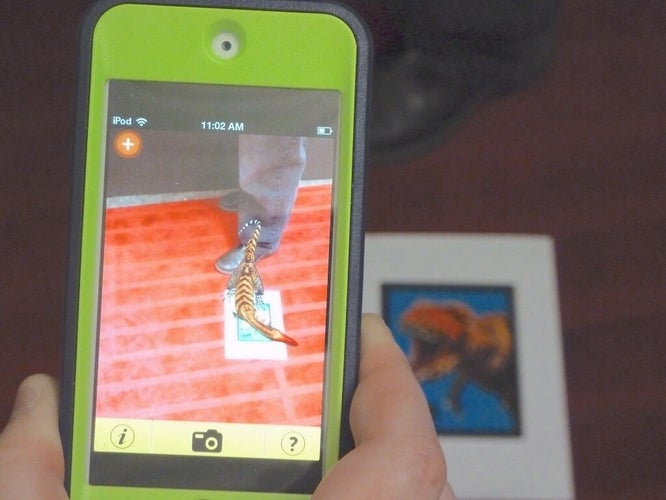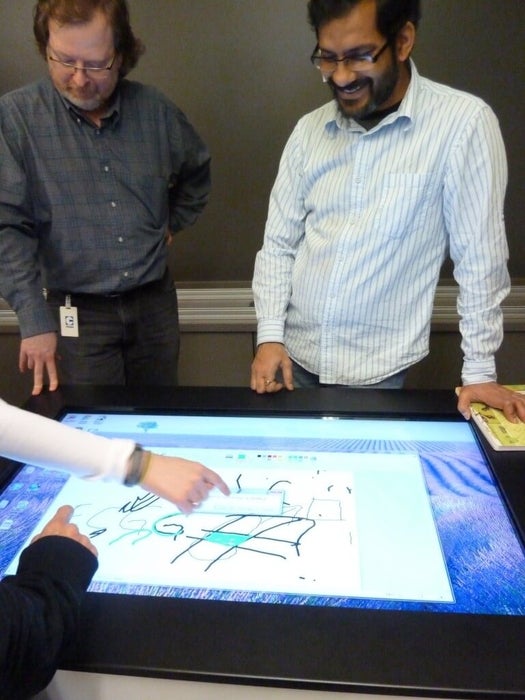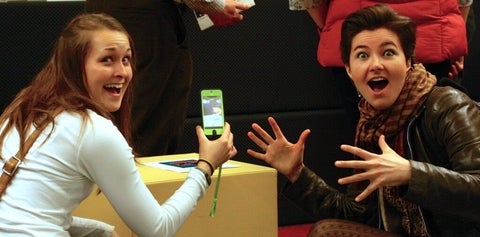In our pursuit of more effective and novel ways to tell stories about our research, the ECGG recently visited the Felt Lab (@REAPWaterloo), a digital media laboratory that is part of the Research Entrepreneurs Accelerating Prosperity (REAP) research initiative. Named for its home in an old felt manufacturing facility in St. Jacobs, Ontario, the Felt Lab provides space for creativity and innovation based on interactive digital display technology. We were lured into the Felt Lab space by REAP’s aim to bring together cross-disciplinary students, academics, and business professionals in this wildly creative environment – not to mention its world class tech toys.
We went into the day with open minds about how digital technology could enhance our research, teaching, and outreach. Drawing on cutting edge technologies at the Felt Lab was a natural first step to start exploring ways to make the stories about our research more accessible and interactive. The Felt Lab hosts weekly “thinkerings”, or collaborative brainstorming sessions, where people from diverse backgrounds are brought together to imagine new applications for digital technology and create solutions to difficult problems.
At the lab we tried out many different digital technologies to get a feel for how they could be leveraged as novel tools for communicating with students or working with fellow researchers or communities where we conduct research. Among the technologies we experienced were augmented reality applications that are able to change real world objects into life-like computer generated animations when viewed through the camera of a cellphone or tablet. Some of our group members were imagining how such technologies could be useful for disseminating research results related to place-based environmental change and generating interactive tools for learning about hidden stories and meanings behind places and objects.

Augmented reality demonstration at the Felt Lab in St. Jacobs, Ontario. This iPhone is viewing a 2D image of a dinosaur and generating a moving 3D dinosaur for viewers.
Some ECGG members were especially excited about the GestureTec Illuminate Table, which is an interactive tabletop that enables multiple people to collaboratively create and view digital media. We saw opportunity with this tool to engage research participants in collaborative exercises such as mapping, sorting or drawing materials.

The GestureTec Illuminate Table allows multiple users to touch the screen and manipulate any type of display or application.
Our visit to the Felt lab has been eye opening to how digital technology may be used to support collaborative methods or techniques to engage participants and share stories about our research. While our brains are zinging with far out ideas, we (individually and collectively) are grappling once again with some essential self-reflective questions:
- Who is our audience? Is our audience local in Waterloo or spread out across the globe? What tools or technologies might be most effective in communicating with different audiences?
- How can we make our research results more accessible for policy makers? How can we tell our research stories in ways that matter?
- How can we engage the tech sector in collaboration around environmental change research, education and outreach? With significant costs for digital technology, what are sources of funding to support such initiatives?
As ECGG moves forward in resolving these questions and pushing the academic boundary to make environmental change research accessible and accountable, we are glad to have the Felt Lab as neighbours in Kitchener-Waterloo. Thanks Felt Lab (@REAPWaterloo) for the ‘tech for thought’, and for the opportunity to play in your digital sandbox.
